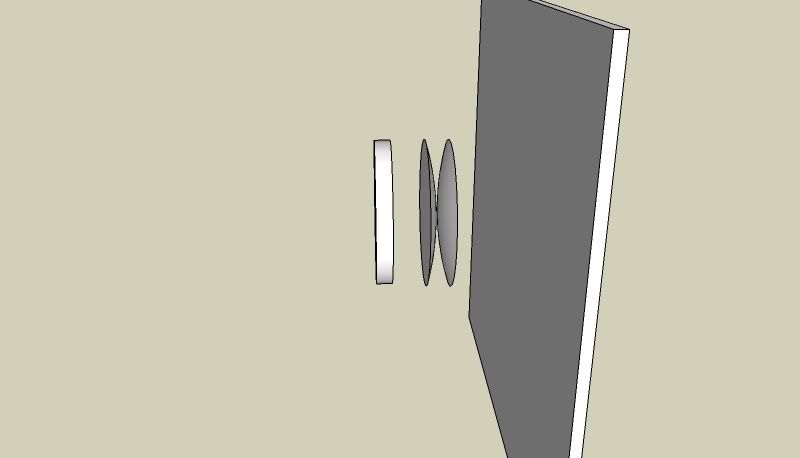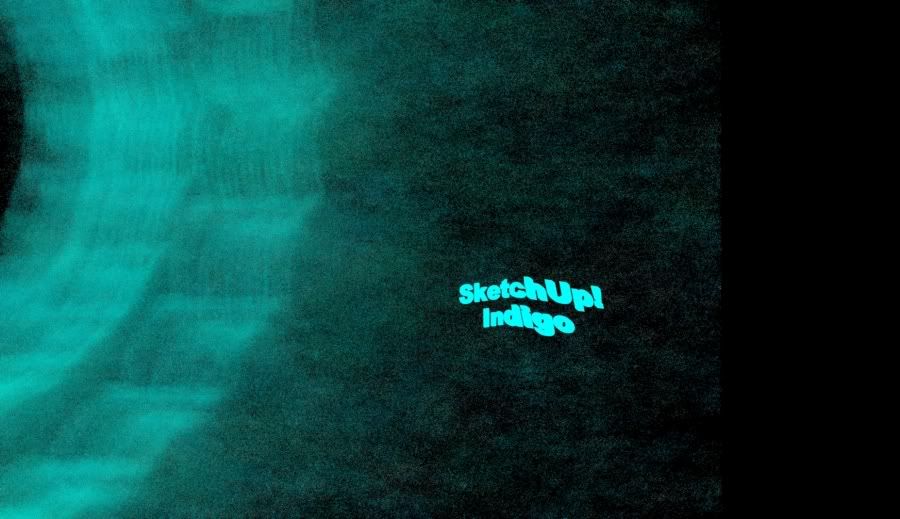Virtual Optical System
-
After much experimentation with Indigo's refraction index, off and on, for quite some time, I've managed to re-image an object entity in SU through a refractor-type optical system using Indigo. I used a modified Kellner-type eyepiece, more closely resembling a RKE.
Here's the object I imaged and the optical setup in the distance. The distance ratio of the object (the red slashed square) to the objective lens in relation to the objective and the 'eyepiece assembly plate' is 16 to 1.

Here's a view of the objective lens and the eyepiece assembly.

And the focusing or eyepiece assembly. I've changed the lenses to monochrome so they can be seen.

And finally the rendered image on the receiving plate.

I will also post a reflector type system where I've gotten MUCH better imaging results.
-
Very clever

This is so meta... you have a simulation within a simulation.
Did you try with a pinhole camera, too? -
@unknownuser said:
That's facinating...how did you know it was even possible?
I have a couple of telescopes, and saw early on the wonderful reflections in the chrome material and the clean refractory attribute capabilities of Indigo, and most other rendering engines, and thought I'd give it a try. However, it wasn't till I was familiar with Indigo that I thought I might be able to do it
-
Very intriguing. How did you set up the lenses? How did you focus them? Was it based on focal length?
-
I was searching a looong time ago for how I could model a lens accurately in SU, care to share your secret on that?!
 I couldn't even find an accurate mathematical/visual description... and since I'm just a humble architect, not an optics geek, I had to give up the quest... and here it is... I was looking to create a working microscope and telescope in Kerkythea.
I couldn't even find an accurate mathematical/visual description... and since I'm just a humble architect, not an optics geek, I had to give up the quest... and here it is... I was looking to create a working microscope and telescope in Kerkythea. -
Basically I experimented endlessly with different "eyepieces" and refraction indexes. THIS site helped me develop some basic shapes. But to be honest, simple mirrored arcs for lenses will suffice IF you keep the lens as shallow as possible. However, the below pics were a bit harder because I needed to get the parabolic shape of the main mirror close to perfect. . .or as in the "the real world", get the wavelength error within several angstroms of, say, yellow light. A "real" telescope mirror has to be MUCH more accurate than what I am doing of course.
Here's a "newtonian" type setup.



I've 'cheated' slightly here, in that I am not using eyepieces, and only letting the focus point of the image impact at the receiver plate. This would not allow a 'virtual eye' to see the image, as the image is crossing at the plate plane, and not traveling parallel. The imaged "SketchUp Indigo" was very close to the reflector. The ratio from the image to the receiver plate in comparison to the receiver plate to the top of the sagitta of the parabola is a modest 6 to 1, so I get a nice crisp image.

The below pic starts to show the error either in Indigo's ray tracing algorithm or the preciseness of my parabolic surface. I imagine it's my inability to draw an exact parabolic surface. The ratio here is a huge 320 to 1. Not much for a real optical system, but still kinda impressive in a virtual environment, not designed to do such.

-
Thank you, Cyberdactyl, for that great link! Wish I had found it long ago.
Advertisement







